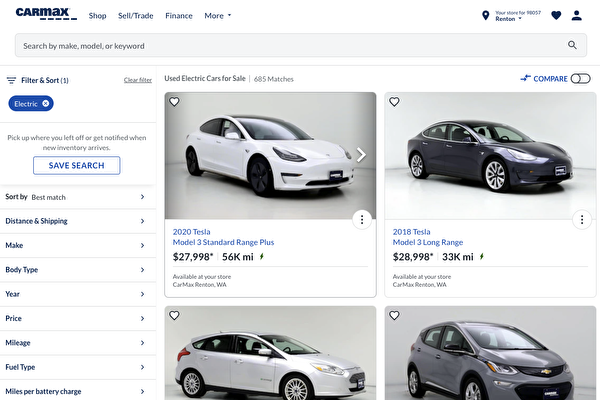When it comes to purchasing a used car, “buyers beware.” You will never truly know if you have bought a sturdy and reliable vehicle or one that comes with issues until you drive it home. By looking for some obvious signs, you can determine if the car you are considering is not worth the risk. Being aware of these signs may help you discover potential problems before you spend your hard-earned money. Here are 10 warning signs to watch out for to assess whether the car you want to buy is subpar.
1) Uneven Tire Treads
If a car is properly maintained, its tires should be regularly replaced or rotated according to the season. A well-maintained car should have even tire tread wear. If tire treads are unevenly worn or if some tires show more wear than others, it may indicate that the tires have not been rotated or replaced with the changing seasons. This suggests that the car has not received proper maintenance. In the worst-case scenario, uneven tire wear could mean that the car requires costly front-end alignment work. Regardless of the age of the car, uneven tire treads are not a good sign. If you notice uneven tire wear, it should raise a red flag.
2) Strange Odors
When evaluating a car, it’s best to engage all your senses. Don’t rely solely on what your eyes see but also trust your sense of smell. If you detect any strange odors while test driving the car, take note. This could indicate leaks or burning under the hood, or both. Sometimes the odor is unmistakable, such as the smell of burnt oil. Other times, it may be challenging to identify a specific odor. Nevertheless, if the car is running properly, you should not smell anything unusual inside. Any strange or unusual odors indicate problems, particularly with the engine. This is never a good sign. Strong odors should prompt further investigation under the hood.
3) Stiff Suspension
One of the most expensive repairs for a vehicle is the suspension. Proper suspension is crucial for any car and can easily go out of alignment. A quick and simple test for a car’s suspension is known as the suspension test. While walking around the car, stop and press down on the bumpers (front and back). A car with properly functioning suspension will bounce up and down once or twice. However, if the car doesn’t bounce or the suspension feels stiff with resistance when pushing down on the bumpers, it may indicate suspension issues that could result in costly repairs down the line.
4) Window and Lock Problems
Power windows and keyless entry locks are standard features in most vehicles today. The windows and doors that slide down and open with the press of a button are powered by the car’s electrical system. Any issues with the windows or locks may suggest electrical problems in the car. If windows only partially roll down or doors don’t lock and unlock as they should, it could indicate electrical issues in the vehicle. While the problem may currently exist with only one window, over time, it could worsen. Additionally, trying to pinpoint the exact electrical issue in a car may require a hefty sum to be paid to a mechanic. Checking the power windows and locks is a simple test that can help identify potential complex issues. (To be continued next week)

